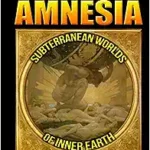
Summary
➡ The text discusses the various interpretations of Lucifer and the Vatican’s history. Lucifer is seen as a force of nature with potential for good or evil, not a devilish figure. The Vatican, a symbol of Christianity, has roots in pagan traditions, named after the Etruscan goddess Vatica, associated with the underworld and prophetic visions. The text also explores connections between various mythologies, symbols, and the concept of the afterlife.
➡ This text talks about various places around the world that are believed to be entrances to the underworld or hell, according to different cultures and legends. These include Waipio Valley in Hawaii, Mount Asoro in Japan, and Hooska Castle in the Czech Republic. The castle, built in a remote area with no strategic importance, is said to cover a bottomless pit or gateway to hell. Despite attempts to investigate these claims, the truth remains a mystery.
Transcript
Her origins stretch into prehistory, but we know she was associated with the rising of the sun, likely rode a chariot pulled by horses. We know she was beautiful, a symbol of love and insatiable sexual desires, as well as fertility and eternal rebirth. Her name means east. Which of the Anglo Saxons is ostra or istra, the old English word for April, which was celebrated with a feast in her honor and was appropriated by the Christians as Easter, the celebration of the resurrection of Christ. As a spring festival, it remained associated with fertility and birthday or rebirth in the mysteries.
The modern symbols of Easter, such as eggs, rabbits and flowers, are relics of this ancient association with fertility and new beginnings. In Old German, the name of April was Ostarmanath. The goddess was Astara, a pagan holiday that celebrates the spring equinox. Catholicism is based in large part on pre christian mystery schools. For example, the seven sacraments are similar to the seven initiations in mithraic mysteries, which also had Eucharist and baptism. So in an astro theological context, Lucifer is associated with the planet Venus, which in greek mythology is Hesperos in the evening, son of the dawn goddess Eos, or Aurora to the Romans, and half brother of her other son, phosphorus, the morning Star.
In revelation 22 21, Jesus identifies himself as the morning star, which is also a term used to describe Lucifer. I’m a Christian, sir. I’m pure and virtuous and wholesome and innocent. How can you say anything about me, sir? You need to be born again. I am born again. Did you just say that you were Lucifer? I am Lucifer. Okay, define Lucifer for me. Pure, virtuous, wholesome, innocent individual that’s out to help people. Lucifer is. Yeah, say that again. Lucifer is a pure, holy, virtuous. Virtuous. Now see the Lucifer that God created. That’s the same one. Oh, man.
This is great. I’m gonna put this on the Internet. God bless you. Brotherhood. Because that’s exactly what the shriners and Masons teach. Is that Lucifer? Lucifer is light. No. And you’re confirming. You know what, sir? Jesus said. Many will say to me on that day, Lord, Lord, did not. We do not do these good deeds in your name. And you’ll say, away from me, you workers of iniquity. I never knew you. Jesus said it in Matthew, chapter five. Mercy. No. That’s hard to believe. So you’re a Christian and you don’t know that? Actually, no, I really am.
You are because I’m pure and virtuous. You’re pure and virtuous. Okay. Yeah. In other words, you’re perfect without Jesus, right? No, no, no. Okay, tell me about Jesus. Who is Jesus? He’s my leader. Is he the son of God? Is he the only worshipful master? Yes. Have you ever been called worshipful master? No. Because I’ve just been too busy. I’ve been working and working to help people. What kind of work? Get out of here. See, this is what a Mason confesses, is that Lucifer is lightning. Lucifer was a journal published in 1889 by Madame Helena Blavatsky, founder of the Theosophical Society.
The journal published articles on philosophical, scientific and religious topics, including the kabbalah, which Blavatsky insisted was part of an ancient mystery passed down since remote antiquity, long before it reemerged as jewish mysticism, predating all abrahamic faiths. The mysteries of the Jews were identical with those of the pagan Greeks, who took them from the Egyptians, who borrowed them in their turn from the Chaldeans, who got them from the Aryans, the Atlanteans, and so on, far beyond the days of that race. Composed towards the end of the 13th century, the zohar emerged in southern France and Spain as a foundational text of jewish mysticism, which, among other things, facilitated a way of understanding the esoteric context of passages in the Bible, such as the part of Genesis where the serpent tempts Eve with the forbidden fruit.
According to the Zohar, the serpent reveals that touching the fruit but not eating of it will not result in death or spiritual slumber, but instead open her eyes and make her like the Elohim or like God to Kabulus. The forbidden fruit is the orgasm which results in a loss of life force, unless the sacred act is performed in a way where the orgasm is attained, but the vital essence is not lost through climax. This is known in the east as White Tantra and was one of the alchemical practices known to the Templars a century earlier. The 12th century was the century of the Crusades, when thousands of men from all over Europe were leaving for the Holy Land.
It was the century which saw the dissemination of the grail legends throughout Europe. Incidentally, Europe is named after Europa, a phoenician princess from Tyre, a city located just 12 miles from the modern border of Israel. The Templars believe that they descended from bloodlines that fled into Europe after the destruction of the temple. And part of their crusade while reclaiming territory in the Levant had to do with retrieving esoteric kabbalistic doctrines allegedly hidden below the holy temple. Besides their famous Red Cross, they revered another sacred magical symbol allegedly passed down to Solomon from the arian magi, or magicians that were rumored to have helped him build the first temple.
The knights Templar were accused of worshipping an idol known as baphomet, which is a word that reveals its true esoteric meaning when written in Hebrew and interpreted with what is known as the at bash cipher, where the first letter of the Alphabet is substituted for the last, the second for the second, last, and so on. When applied to the word baphomet in Hebrew, which is written from right to left, it reads as the greek word sophia that translates into wisdom in English. As for the goat head associated with Baphomet, it is simply symbolic of Capricorn, the zodiac sign affiliated with Saturn, who rules over the latter part of the year during harvest time and Saturnalia, or what has come to be known as Christmas.
We still see the Yule goat in many parts of Europe around the winter solstice, symbolic of spiritual rebirth and liberty. As articulated by Aleister Crowley, the devil is historically the God of any people that one personally dislikes. This serpent Satan is not the enemy of man, but he who made gods of our race. Knowing good and evil, he bade know thyself and taught initiation. He is the devil of the book of Thoth, and his emblem is Baphomet, the Androgyne, who is the hieroglyph of arcane perfection. He is therefore life and love, but moreover his letter is ein, the eye, so that he is light, and his zodiacal image is Capricornus, that leaping goat whose attribute is liberty.
That said, Sophia was the goddess of wisdom and considered to be the bride of God. In a kabbalistic context, internal wisdom, or gnosis, means knowledge in Greek and implies an intuitive internal knowledge which is equated with light. The Templars were cobalt, which according to 33rd degree freemason Albert pike predates Judaism and all abrahamic faiths, and it is in this context that Lucifer is symbolic of divine spiritual light or wisdom. This inner light is activated through tantra, or sacred sex, which means that through the act of semen retention, the orgasm is separated from the expelling of one’s vital essence and is instead amplified, prolonged, harnessed, and transmuted into more refined creative and spiritual energy.
Known in the east as chi or Prana, and in european and alchemical societies as Vril, Stanley Kubrick was an initiate into the ancient mysteries and would often reveal this guarded, esoteric knowledge to the public through his films. One example is in this short clip from the 1964 movie Doctor Strangelove. Tell me, Jack, when did you first become well developed this theory? Well, I first became aware of it, Mandrake, during the physical act of love. Yes, a profound sense of fatigue, a feeling of emptiness followed. Luckily, I was able to interpret these feelings correctly. Loss of essence.
I can assure you it is not recurred, Mandrake. Women sense my power and they seek the life essence. I do not avoid women, Mandrake, but I do deny them my essence. Yes. Eliphas Levy, author of the Mysteries of Magic, who says, what is more absurd and more impious than to attribute the name of Lucifer to the devil, that is, to personified evil? The intellectual Lucifer is a spirit of intelligence and love. It is the paraclete. It is the Holy Spirit, while this physical Lucifer is the great agent of universal magnetism. In her book the Secret Doctrine, Helena Petrova Blavatsky says, lucifer represents life, thought, progress, civilization, liberty, independence.
Lucifer is the logos, the serpenthenne, the savior. Another 33rd degree mason, Albert pike is quoted as saying, lucifer is divine and terrestrial light, the Holy Ghost and Satan at one and the same time. In this context, the light bearer is not a person with a pointy tail and a fiery pit, but a force of nature which has potential for what, from our perspective, could be defined as good or evil. In his book Morals and Dogma, Albert pike once again says, lucifer the light bearer, strange and mysterious name to give to the spirit of darkness. Lucifer, the son of the morning.
Is it he who bears the light and with its splendors intolerable blinds, the feeble, sensual or selfish souls? Doubt it not. Another proponent of this line of thought is author and honorary 33 degree mason Manley P. Hall, who goes on to say, when the mason learns that the key to the warrior on the block is the proper application of the dynamo of living power, he has learned the mystery of his craft. The seething energies of Lucifer are in his hands, and before he may step onwards and upwards, he must prove his ability to properly apply this energy.
In slavic folklore, the goddess sisters of the dawn are called Zorya or Zarya. They live in the palace of the sun. Open the gate for him in the morning so that he can set off on a journey through the sky, and are also described as virgins, associated with the color red. The goddess of the morning was linked with saffron and roses, which also embody the glowing hues of the dawn of the rose was also the primary symbol of the feminine archetype, the great goddess and the soul. In the christian tradition, the rose was associated with the Virgin Mary, along with the rosa Mystica and the Hortus Conclusus, or enclosed garden, and in the gnostic and alchemical tradition, with Sophia, or divine wisdom.
In greek, the feminine aspect of God and the Holy spirit. Lucifer only referred to Venus in the morning before sunrise, hence the term lightbringer and morning star. Venus in the evening and morning were likely thought to be different planets. Hence they were given different names represented by different gods. It became associated with a fallen angel descending from heaven to rule the underworld, which is seen as comparable to the motion of Venus in the sky and appears in several near eastern mythologies which mimic Satan’s fall from heaven. Another example from mythology is Persephone, goddess of spring, who is abducted by Hades to become queen of the underworld until she is eventually reunited with her mother Demeter, goddess of agriculture and harvest, to start the spring cycle all over again.
This story of Persephone is central to the Elysunian mysteries, which involved psychedelic intoxication, which allegedly aided in altered states of consciousness and facilitated divine mystical insights and divination to occur. This brings us to the topic of the Vatican, with the Vatican regarded by millions as a symbol of Christianity. But what is the ancient history of this location in Italy, and what are the origins of its name? In actuality, the Vatican is neither Latin nor greek, and it cannot be traced to the Bible either. While the word Vatican is associated with the church, it predates Christianity and is closely linked to the etruscan goddess Vatica.
Located in Rome, the Vatican is a symbol of the roman catholic faith and as a city state, was founded on February 11, 1929 as the world’s smallest independent country by both population and area, with a population of around 840 and an area of about 108 acres, but with an influence over millions of people that span the globe. Yet, as with many other christian traditions and customs. The Vatican has a pagan origin, and about 3000 years ago, the Etruscans settled the region of central Italy known as Etruria and ruled that part of the Mediterranean. Before the rise of Rome, the etruscan nobility were known as Rutuli, or Rutulians, which means the red ones with the meaning of the blond ones.
They were a legendary tribe like the Phoenicians, which also means red in Greek, and the ancient Aryans, all of whom revered the swastika. The first kings of the Roman Empire were etruscan, with many of them having blonde hair and blue or grey eyes. Of course, the Roman Empire famously had red shields, which, incidentally, is what Rothschild translates to in English as they were the official bankers of the papacy, which is a covert continuation of the empire. Their capital city was about 20 miles southeast of modern Rome. And they allegedly used Rome as a burial and place of sorcery, divination and other ritualistic activities associated with the mysteries.
While most of the etruscan literature and mythology has been lost, we do know that they built a large cemetery on a hillside slope outside their ancient city in the area that later became the city of Rome. And the guardian of this necropolis was the etruscan goddess Vatica, goddess of the underworld, whose duty was to keep a watching eye on those who had passed away. It seems that the etruscan beliefs about the afterlife were similar to those of ancient Egyptians, where treatment of the deceased remains was important for survival and a successful journey to the next life.
According to etruscan mythology, Vanth was a death demonization that attended from the moment of death until entry to the underworld, usually depicted with wings and had bearded snakes entwined around her arm. In addition to being goddess of the underworld, Vatica was also a bitter tasting grape used to make wine that grew on the slope. When people ate it, they experienced hallucinations and a word passed on into Latin as a synonym for prophetic vision. The latin word Vaticanor means foretel or prophecy, from vadis, poet, teacher, oracle. So while according to the catholic encyclopedia, the origin of the name Vaticanus is uncertain, other sources claim that it comes from the ancient etruscan language.
And the Vatican hill takes its name from the latin word Vaticanus, alluding to the drug induced oracles or fortune teller priestesses which delivered their prophecy there in ancient times. The area which is now St. Peters thus became known as Vatican Hill. Another proposed connection to the word Vatica relates to the tika, or dot of jewelry hindu women place on their forehead to indicate the third eye and corresponds to the pineal gland and also related to psychic phenomena, intuition, and the hindu 6th chakra. In addition to melatonin, the pineal gland is thought to produce a molecule known as DmT, a powerful hallucinogen, and appears to be related to dreaming and near death experiences.
In welsh mythology and folklore, especially in Wales, I’m told that migrating geese are sometimes associated with the hounds of hell, supposedly because their honking in the night is reminiscent of barking dogs. The pagan version of hell is not the same as the christian version where you get tortured and punished. In the Viking Age, if you didn’t die in battle, you would simply just go to hell. The old norse word hel, which in Old English is hell, h e l l, derives from the indo european word kel. Therefore, both of the words can be translated into hideous or cover.
In modern English, the term is also etymologically related to modern english word hall and therefore also Valhalla, an afterlife hall of the slain in norse mythology in norse mythology, hel is also the queen of the realm of the dead, and inside our hall everything has names associated with misfortunes. For instance, her dining table is called hunger and the knives are called starvation. In her bedroom, she has her bed, called sick bed encapsulated with curtains called misfortune. In icelandic sagas, hel is referred to as a daughter of Loki, described as half blue and half flesh colored, and plays a key role in the attempted resurrection of the God boulder.
She is neither dead nor alive, but rather seems to be in between the two. Her name means hidden and refers to the dead, whose souls are invisible to the living, and she shares some parallels with the etruscan goddess Vatica, goddess of the underworld, where the Vatican gets its name. The Etruscans did not bury their dead inside the walls of their cities. Instead, they built a large cemetery on a hillside slope outside of their ancient city in the area that later became the city of Rome. Vatica had several other related meanings. In ancient Etruscan, the name was not only associated with the goddess of the underworld, but the word passed on into Latin as a synonym for prophetic vision.
The latin word Vaticanor means foretell prophecy from Vatis meaning poet, teacher, or oracle. So while some argue that the word Vatican literally means divining serpent, even though the word does not appear in the Bible, keep in mind the divination was associated with the ancient goddess, which was also always affiliated with a serpent in pre christian times. It is ironic that the gnostic trans induced divination associated with the ancient mysteries were declared heretical by the Vatican and punishable by death when the Vatican itself is literally named after the very location known as the ancient epicenter of oracle divination, sex, magic and drug fueled orgies.
That said, prior to the writings of Snorri Sturlsen, the icelandic mythographer who preserved the norse sagas, it seems that Hel was previously a place and synonymous with the grave, having no supernatural being overseeing it. The gates of Hel are various places on the surface of the world that have acquired a legendary reputation for being entrances to the underworld. Often they’re found in regions of unusual geological activity, particularly volcanic areas, or sometimes at lakes, caves or mountains. Legends from both ancient Greece and Rome record stories of mortals who entered or were abducted into the Netherworld through such gates.
According to hawaiian folklore, Waipio Valley contains an entrance to the lower world, which is now concealed and hidden from view by sand. Waipio means curved water in the hawaiian language. In China, Feng gu has a long history in the taoist tradition of being a portal to hell. Diwu is the realm of the dead I, or hell. In chinese mythology and Buddhism, jihu is typically depicted as a subterranean maze with various levels and chambers to which souls are taken after death to atone for their sins that they committed when they were alive. Mount Asoro in northern Japan is said to be an entrance to hell.
It’s the location of a buddhist temple and a folk religion pilgrimage destination, located in the caldera of an active volcano and is believed in japanese mythology to be one of the gates to the underworld. The mountain was once called Usuriyama by the Ainu people, but was gradually changed by the Japanese to Asoru, meaning dread. St. Patrick’s purgatory is an ancient pilgrimage site on the station island in Ireland. According to legend, the site dates from the fifth century, when Christ showed St. Patrick a cave sometimes referred to as a pit or a well on station island that was an entrance to purgatory.
Its importance in medieval times is clear from the fact that it’s mentioned in texts from as early as 1185 and shown on maps from all over Europe as early as the 15th century. Although the cave has been closed since 1632, several descriptions by early pilgrims survive. They refer to it as a bottomless cave or an enclosed pit. The entrance, which was kept closed and locked, has never been excavated, so we can only rely at this point on these descriptions of the cave. Based on other archaeological excavations, it seems clear that this was probably a very ancient structure.
Prague is the capital and largest city in the Czech Republic. Prague, the 14th largest city in the European Union and the historical capital of Bohemia. Nicknamed the city of 100 spires, it’s known for its colorful baroque buildings and beautiful gothic churches. Prague was the capital of the kingdom of Bohemia and the main residence of several holy roman emperors, and was an important city to the habsburg monarchy and its Austro Hungarian Empire. Located in the forests about 30 miles north of Prague in the Czech Republic is the mysterious Gothic Hooska castle. It was constructed in a remote area in the second half of the 13th century, during the reign of Autocarre II of Bohemia.
I say mysterious because it wasn’t near any available sources of water, and it did not hold any significant strategic importance. Yet. The Third Reich occupied the fortress during World War two, and multiple myths exist about their alleged occult involvements there. I don’t want to speculate too much about what they were doing, as it was just rumors. But years later, during renovations, the skeletons of three SS officers were found, though it is not certain what the circumstances were surrounding their deaths. Folklore states that the significance of its location is due to a bottomless pit, or what some have called a gateway to hell or gateway to other worlds, and that the bohemian rulers decided to seal up the gateway with a castle.
There are legends surrounding this deep hole, with some locals claiming it is an entrance into a subterranean cavern system leading to possibly inhabited realms of the inner earth. It is said that bohemian rulers decided to seal up the gateway or entrance. And while it is now possible to tour the enigmatic castle, the hole itself is shut off and covered by metal bars. Investigators who have tried to find the bottom have not been able to find one. And the walls inside are covered with some of the oldest paintings in Europe. Most are of demons and dragons being slain.
The cellar is named Satan’s office, and it even has a throne embellished with horns and a trident. At best, no one can tell why this castle is here or how long it has stood here. Who built it, why is it here and why was it built? Nobody can tell you. It is not known if it was inhabited, as there is no trade route through here. We are in the middle of a medieval forest in the middle of nowhere. It was said that these forests were not even suitable for hunting, but this was a well equipped castle for its time.
Huska is also called the gateway to other worlds. It’s here to prevent something from getting out of here, but what was never named. They were called beasts of hell. Devilish. They took an inhuman form. It was at the end of the 9th century. At this point, the earth should have broken. A rock should have broken. A hole was created. This hole was described as a gateway to hell. Huska is also called the gateway to other worlds. They were half men, half animals. They were also called non humans. They hurt people, cattle, and crops. It is written that pilgrims and travelers did not want to come here much later, so they tried to fill the hole.
They brought in hundreds of wagons with wasteland. Each time it was almost done, everything fell inside. At least they closed off the hole. My name is Robert Sepper. I’m an anthropologist. My published work is available on Amazon and through all other major book outlets. If you’d like to support my work, you can do that through patreon.com. there should be a link in the description. Please subscribe for future updates. Leave your thoughts below. Have a wonderful weekend and I hope to see you again soon.
[tr:tra].








